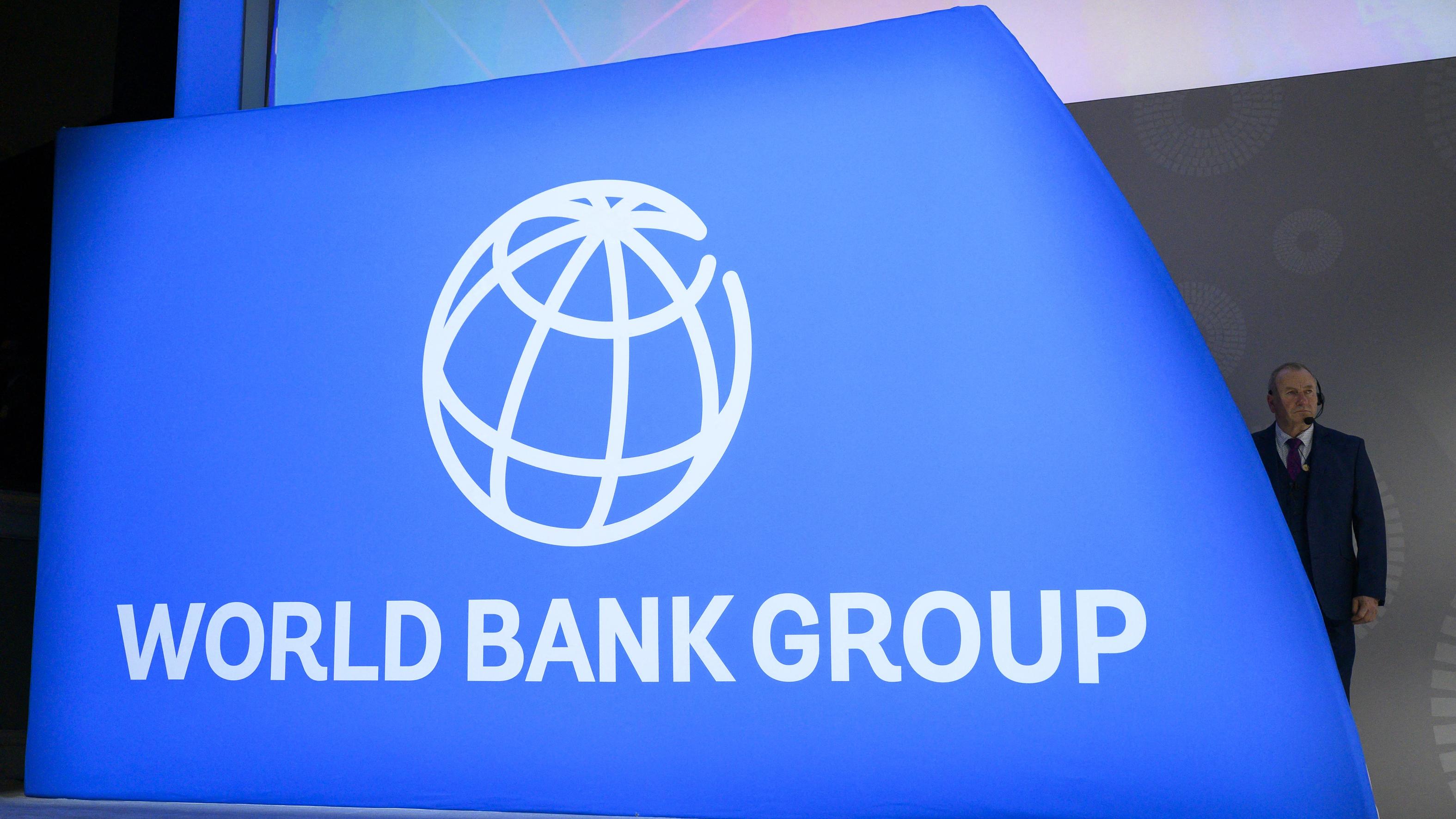 A stage director looks on at the IMF/World Bank Annual Fall Meetings Plenary Session in Washington, DC, on Oct 18, 2019. (PHOTO / AFP)
A stage director looks on at the IMF/World Bank Annual Fall Meetings Plenary Session in Washington, DC, on Oct 18, 2019. (PHOTO / AFP)
LONDON — The World Bank warned that high borrowing costs have "changed dramatically" the need for developing nations to boost sluggish economic growth.
The multilateral lender's latest warning comes as international bond sales from emerging market governments hit an all-time record of $47 billion in January, led by less risky emerging economies such as Saudi Arabia, Mexico and Romania.
The World Bank warned in its Global Economic Prospects report, opens new tab, published in January, that the global economy was set for the weakest half-decade performance in 30 years during 2020-2024, even if recession is avoided
However, some riskier issuers have started to tap markets at higher rates. Kenya recently paid more than 10 percent on a new international bond - the threshold above which experts often consider borrowing unaffordable.
READ MORE: WB economist: Rising Asia debt levels could temper growth
"When it comes to borrowing, the story has changed dramatically. You need to grow much faster," Ayhan Kose, deputy chief economist of the World Bank, told Reuters in an interview in London on Tuesday, though he declined to comment on individual countries.
"If I had a mortgage with a 10 percent interest rate, I would be worried," he added.
Kose added that faster growth, especially a real growth rate higher than the real cost of borrowing, could prove elusive.
Data published by the Institute of International Finance on Wednesday showed global debt levels had touched a new record of $313 trillion in 2023 while the debt-to-GDP ratio - a reading indicating a country's ability to pay back debts - across emerging economies also scaled fresh peaks, indicating more potential strains ahead.
The World Bank warned in its Global Economic Prospects report published in January, that the global economy was set for the weakest half-decade performance in 30 years during 2020-2024, even if recession is avoided.
Global growth is expected to slow for a third consecutive year to 2.4 percent, before ticking up to 2.7 percent in 2025.
Those rates are still well below the 3.1 percent average of the 2010s, the report showed.
The growth slowdown is particularly acute for emerging economies, around a third of which have seen no recovery since the COVID-19 pandemic and have per capita income below their 2019 levels. Kose said this throws many education, health and climate spending goals into question.
"I think that it's going to be difficult to meet those objectives, if not impossible, given the type of growth we have seen," Kose said.
An escalation of the Middle East conflict is a further downside risk, adding to concerns over tight monetary policy and weak global trade.
"Trade has been a critical driver of poverty reduction, and obviously for emerging market economies, a critical source of earnings," Kose said.
Debt restructure
If growth remains low, some emerging economies might face having to restructure debt, Kose added, by reprofiling maturities or agreeing haircuts with creditors.
"Sooner or later you need to restructure the debt and you need to have a framework. That has not happened in the way the global community was hoping for."
READ MORE: Higher interest rates 'important driver' of global debt growth
G20 nations launched the Common Framework in 2020, when the pandemic upended nations' finances. The program aimed to speed up and simplify the process of getting overstretched debt-distressed countries back on their feet.
But the process has been beset by delays, with Zambia locked in default for more than three years.
"If growth remains weak and financing conditions remain tight, you will not see an easy path out of this problem," Kose said. "But if growth magically goes up, it's like a medicine."


